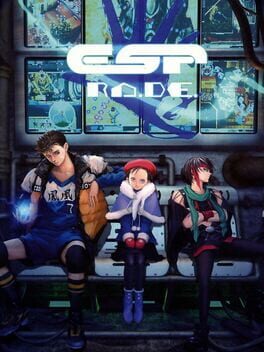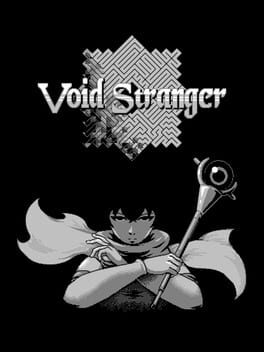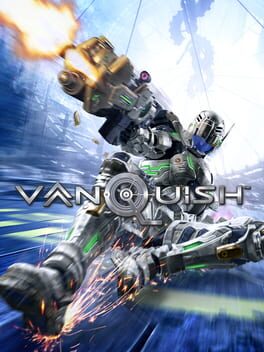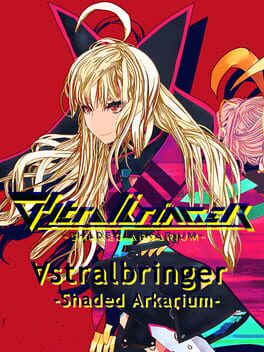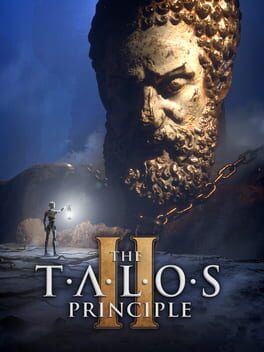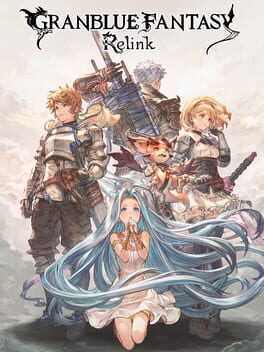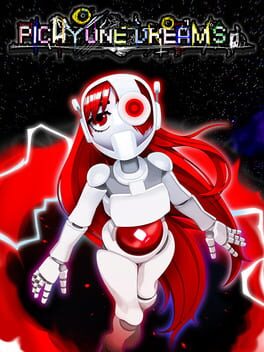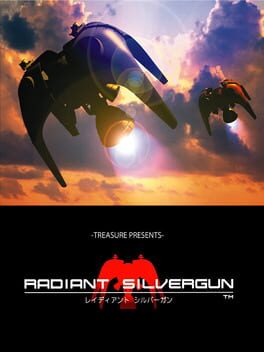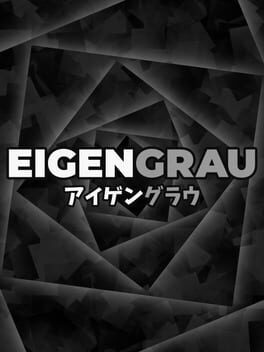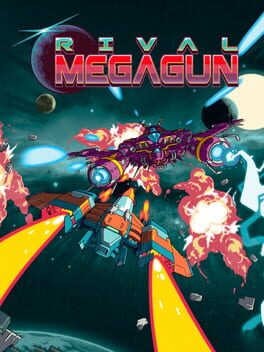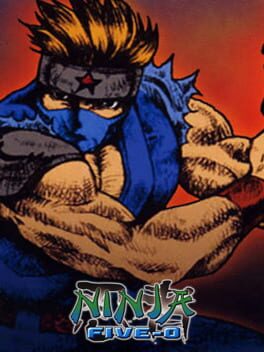xaerock
2024
Feels more like a solid remake or a Dragons Dogma 1.5 than a sequel. It's more of the same which can be a good or bad thing depending on your expectations. For example, if you're expecting plenty of new enemy types, bosses or drastic changes to gameplay systems (like improved Pawn AI) compared to the first game that's really not here.
It's mostly the same game as Dragons Dogma 1 base game but bigger. The focus of the game is clearly on a general open world experience with fun to control player classes. There is very little on the side of tight combat focused dungeons like Bitterblack Isle (DD1 Dark Arisen expansion).
The combat and party management is still fun make no mistake, but it's definitely on the side of a power trip game where the player character grows powerful quickly (both statistically and mechanically) but enemies do not improve to match.
The variety of enemy encounters seems like one of the weakest points of the game. It's a sequel but 90% of the enemies you face are things you might already know from DD1. The bulk of enemies are trash mob level goblins, bandits and saurians which have 4-5 recolors based on how far you are in the game. But the way you fight them is exactly the same. It's not like they gain some threatening new attack or AI behavior, so going back to the first area to fight the same enemy class feels much the same.
I think this is a big loss since the core combat does feel good but the enemies really blur together and by the end of the game you might just be doing the same attack sequences and not care about what enemy you're fighting.
The difficulty level is low and XP gain from enemies scales very little; a mid-tier enemy like a Cyclops gives 1/3 the XP of an endgame boss. Exploring the map thoroughly will have you get overleveled for the main story quests quickly even if you don't intend to.
If you're looking for a challenging action RPG dungeon crawling experience like Bitterblack Isle or just lots of new enemies to face and new gameplay systems compared to DD1 that's not in DD2, at least on release.
It's mostly the same game as Dragons Dogma 1 base game but bigger. The focus of the game is clearly on a general open world experience with fun to control player classes. There is very little on the side of tight combat focused dungeons like Bitterblack Isle (DD1 Dark Arisen expansion).
The combat and party management is still fun make no mistake, but it's definitely on the side of a power trip game where the player character grows powerful quickly (both statistically and mechanically) but enemies do not improve to match.
The variety of enemy encounters seems like one of the weakest points of the game. It's a sequel but 90% of the enemies you face are things you might already know from DD1. The bulk of enemies are trash mob level goblins, bandits and saurians which have 4-5 recolors based on how far you are in the game. But the way you fight them is exactly the same. It's not like they gain some threatening new attack or AI behavior, so going back to the first area to fight the same enemy class feels much the same.
I think this is a big loss since the core combat does feel good but the enemies really blur together and by the end of the game you might just be doing the same attack sequences and not care about what enemy you're fighting.
The difficulty level is low and XP gain from enemies scales very little; a mid-tier enemy like a Cyclops gives 1/3 the XP of an endgame boss. Exploring the map thoroughly will have you get overleveled for the main story quests quickly even if you don't intend to.
If you're looking for a challenging action RPG dungeon crawling experience like Bitterblack Isle or just lots of new enemies to face and new gameplay systems compared to DD1 that's not in DD2, at least on release.
1998
1CC:d with all characters.
I love the aesthetic and general pace of this game and it was the first CAVE game that grabbed me. But it has some really janky things I cant dismiss:
- When you end slow movement by releasing the fire button there is 0.5s delay until you begin moving full speed again. This results in a burst of speed outside of your control unless you do a planned stop in place while unfocusing. Extremely weird design decision. The delay only makes sense for entering slow movement (without a rapid button), not exiting.
- One of the heaviest and most annoying slowdown behavior in any CAVE game. Super heavy slowdowns at parts of the game. At least it's not affected by player fire as much as SDOJ.
- Scoring system ruined with broken boss milking. Big portion goes to End bonus though so there is definitely something to play for after clearing the game. However M2:s PSI PS4/Switch ports alternate mode basically fixes the system.
I love the aesthetic and general pace of this game and it was the first CAVE game that grabbed me. But it has some really janky things I cant dismiss:
- When you end slow movement by releasing the fire button there is 0.5s delay until you begin moving full speed again. This results in a burst of speed outside of your control unless you do a planned stop in place while unfocusing. Extremely weird design decision. The delay only makes sense for entering slow movement (without a rapid button), not exiting.
- One of the heaviest and most annoying slowdown behavior in any CAVE game. Super heavy slowdowns at parts of the game. At least it's not affected by player fire as much as SDOJ.
- Scoring system ruined with broken boss milking. Big portion goes to End bonus though so there is definitely something to play for after clearing the game. However M2:s PSI PS4/Switch ports alternate mode basically fixes the system.
Momentum-focused 3D platformer that feels like a 3D Sonic Team game from the Saturn era. Kind of a NiGHTS aesthetic going on as well. This game is about chaining special movement techniques back to back to move around quickly. Basic walking is a bad way to speed up or switch directions. Air dashing, using a grappling-hook type move and riding across terrain to keep your speed up is basically the core gameplay here.
The platforming levels get fairly challenging to clear later on. Mainly the optional Star levels but fully unlocking these requires completionist item collection which may not be for everyone.
The games boss fights seem very weak compared to the main platforming parts. I wish the Busker Bonus minigame wasn't in the game at all, being a trivial quick-time event at the end of every stage. It breaks the pace between levels a bit too much, including the minigame music not being stage specific.
Time Attack mode gets rid of this but that's essentially post-game. Speedrunning through levels does seem like the core appeal and most fun to have in the game.
Levels and especially boss fights have some dead air with auto scrolling rail grab, etc. sequences where you wait around for the next scene. The campaign feels a tiny bit bloated personally. I really started enjoying the level design around World 6-7.
When there isn't dead air the movement does feel very fast paced. Being a momentum based game messing up is just heavily punished. Even in optional levels you're often able to skip sections by fully using all your movement abilities.
The game at launch is a little buggy and also doesn't allow remapping your controls which is strange. The default 'pro' layout has many duplicate buttons and wants you to dash by double flicking the right stick which felt awkward. I had a much better experience after using Steam Input to change R1/RB to be a yo-yo throw button allowing dash by flicking the right stick once and pressing a button.
I had trouble perceiving depth visually on a few levels, especially if the ground is lava or something else that doesn't show the players shadow. Generally seems good though and I can imagine this being polished later.
The platforming levels get fairly challenging to clear later on. Mainly the optional Star levels but fully unlocking these requires completionist item collection which may not be for everyone.
The games boss fights seem very weak compared to the main platforming parts. I wish the Busker Bonus minigame wasn't in the game at all, being a trivial quick-time event at the end of every stage. It breaks the pace between levels a bit too much, including the minigame music not being stage specific.
Time Attack mode gets rid of this but that's essentially post-game. Speedrunning through levels does seem like the core appeal and most fun to have in the game.
Levels and especially boss fights have some dead air with auto scrolling rail grab, etc. sequences where you wait around for the next scene. The campaign feels a tiny bit bloated personally. I really started enjoying the level design around World 6-7.
When there isn't dead air the movement does feel very fast paced. Being a momentum based game messing up is just heavily punished. Even in optional levels you're often able to skip sections by fully using all your movement abilities.
The game at launch is a little buggy and also doesn't allow remapping your controls which is strange. The default 'pro' layout has many duplicate buttons and wants you to dash by double flicking the right stick which felt awkward. I had a much better experience after using Steam Input to change R1/RB to be a yo-yo throw button allowing dash by flicking the right stick once and pressing a button.
I had trouble perceiving depth visually on a few levels, especially if the ground is lava or something else that doesn't show the players shadow. Generally seems good though and I can imagine this being polished later.
2023
Floor renovation game for the WonderSwan. Welcome to Void-Lana, borne from the disappearance of La-Mulana...
---
This puzzle game does some REALLY cool things and has a lot of personality. But it breaks a few genre norms which for me make the world not that enjoyable to traverse. The resulting uncertainty also requires a lot of faith from the player. Still, play blind if possible.
I also wish the game had internal tools for taking notes and pictures ala. La-Mulana 2, to stay a fully self-contained experience. Trying to be meta and encourage external tools (e.g. screenshots) isn't something I see as a positive.
The core puzzle solving experience is quite fun and can get very challenging.
Void Stranger's visual themes are distinct from ZeroRanger and the soundtrack has a lot of variety. I think you can see the growth of the dev team in both.
...Don't ask how I know.
(played without external spoilers)
---
This puzzle game does some REALLY cool things and has a lot of personality. But it breaks a few genre norms which for me make the world not that enjoyable to traverse. The resulting uncertainty also requires a lot of faith from the player. Still, play blind if possible.
I also wish the game had internal tools for taking notes and pictures ala. La-Mulana 2, to stay a fully self-contained experience. Trying to be meta and encourage external tools (e.g. screenshots) isn't something I see as a positive.
The core puzzle solving experience is quite fun and can get very challenging.
Void Stranger's visual themes are distinct from ZeroRanger and the soundtrack has a lot of variety. I think you can see the growth of the dev team in both.
...Don't ask how I know.
(played without external spoilers)
2010
Superb third person shooter that's somewhat underappreciated. Would be nice to see a future game try something similar. The final boss on god hard difficulty is my favorite boss fight in any action game. It's fun and fair while being very challenging.
Lots of untapped potential in gameplay mechanics. A sequel seems unlikely but maybe there'll be a spiritual sequel (like P.N.03 -> Vanquish) or something heavily influenced.
Has barely any bonus content compared to bayonetta. Only unlocks are the 5 challenge stages and god hard difficulty. Even though it was in development for longer than MGR parts of level design in Vanquish seem rushed.
Something that disappoints me is that Platinum was trying to appeal to western audiences with this game which didnt turn out too successful. Since God Hand and PN03 sold poorly Mikami apparently wanted the dev team to hold back on the crazy stuff, and the soundtrack is mostly generic. I wonder what this game could have been with some more time and freedom. Though I bet they had some ideas for a sequel since the games ending leaves room for one.
God Hard difficulty is perhaps the hardest mode in any game by Platinum. It's unfair and ridiculous at points but can be played through in a stylish way with enough experience.
Lots of untapped potential in gameplay mechanics. A sequel seems unlikely but maybe there'll be a spiritual sequel (like P.N.03 -> Vanquish) or something heavily influenced.
Has barely any bonus content compared to bayonetta. Only unlocks are the 5 challenge stages and god hard difficulty. Even though it was in development for longer than MGR parts of level design in Vanquish seem rushed.
Something that disappoints me is that Platinum was trying to appeal to western audiences with this game which didnt turn out too successful. Since God Hand and PN03 sold poorly Mikami apparently wanted the dev team to hold back on the crazy stuff, and the soundtrack is mostly generic. I wonder what this game could have been with some more time and freedom. Though I bet they had some ideas for a sequel since the games ending leaves room for one.
God Hard difficulty is perhaps the hardest mode in any game by Platinum. It's unfair and ridiculous at points but can be played through in a stylish way with enough experience.
Over-the-top Shmup/STG with mouse control for movement. Has a lot of similarities to Akashicverse by the same developer. The game defaults to mouse control but there is an option for gamepad. There's a shop system to unlock moves and increase stats.
I think the crazy speed potential of mouse control fits well with the kind of bosses and stage design in Endless Shirafu games. They tend to have fast paced and unique attacks which require memorization to deal with. Mouse control doesn't make those aspects redundant and potentially gives the player a higher 'power level' so it's interesting to test the concept here.
∀stralbringer can be really challenging if you try playing with base equipment and avoiding the shop. The skill ceiling with just the base tools seems really high. Mouse movement control has crazy potential & grazing/bullet absorb mechanics with this have some interesting synergy (seems similar to the Psyvariar mobile game).
If you want it to get easier you can power up over progress and gain access to additional Methods/Skills. The strange thing is you barely need to scratch the surface of the mechanics to clear the Early Access / non-DLC content. This personally made most of the mechanics seem underbaked because they just don't matter. The game felt 'cleaner' with access to only initial tools but once you expand to the full set of abilities this explodes out of hand and becomes kind of messy.
If you want endgame content or English language support wait for the game to exit Early Access. The base game is similar to if Akashicverse was missing 1-2 of the final stages. Pricing seems reasonable regardless.
note: the trial and current Early Access version appear to require you to set the Windows Region setting 'Language for non-Unicode programs' to Japanese to run properly. Otherwise it will crash at launch.
I think the crazy speed potential of mouse control fits well with the kind of bosses and stage design in Endless Shirafu games. They tend to have fast paced and unique attacks which require memorization to deal with. Mouse control doesn't make those aspects redundant and potentially gives the player a higher 'power level' so it's interesting to test the concept here.
∀stralbringer can be really challenging if you try playing with base equipment and avoiding the shop. The skill ceiling with just the base tools seems really high. Mouse movement control has crazy potential & grazing/bullet absorb mechanics with this have some interesting synergy (seems similar to the Psyvariar mobile game).
If you want it to get easier you can power up over progress and gain access to additional Methods/Skills. The strange thing is you barely need to scratch the surface of the mechanics to clear the Early Access / non-DLC content. This personally made most of the mechanics seem underbaked because they just don't matter. The game felt 'cleaner' with access to only initial tools but once you expand to the full set of abilities this explodes out of hand and becomes kind of messy.
If you want endgame content or English language support wait for the game to exit Early Access. The base game is similar to if Akashicverse was missing 1-2 of the final stages. Pricing seems reasonable regardless.
note: the trial and current Early Access version appear to require you to set the Windows Region setting 'Language for non-Unicode programs' to Japanese to run properly. Otherwise it will crash at launch.
Nice followup to Talos 1 core gameplay wise. Kind of misses the point of the first games unique storytelling and pacing by shoving in triple-A game tropes.
Difficulty of puzzles is moderate and doesn't curve upwards much. For most levels each area introduces new mechanics starting from a basic concept instead of them getting cumulatively more difficult. I wish there was more content like the gold puzzles.
Not sure if I like the voiced dialogue & AAA-ish action sequences. I feel like the major strength of Talos 1 is that the game world & text logs are something you discover and take in entirely on your own pace. I thought 2 having character dialogues & cliche sequences shoved in your face from the get-go takes away from that much more than it gives in return. Text terminals & messaging still have some of that old appeal. Though it does get better about the voiced dialogue later on.
World environments are super pretty but I felt like I was running fetchquests using map markers and dialing through voiced dialogue instead of really taking the areas in. That's probably my own fault for rushing through the game.
Music does a great job fitting the puzzles & locations.
I'm hoping for a DLC expansion like Gehenna but it's kind of weird when this game already has a LOT of puzzles. They just hover around the same difficulty. Not sure why when they added an optional mechanic to skip a lot of puzzles if needed.
About the AAA setpieces.. maybe unlike the Institute for Applied Noematics just because you could doesn't mean you should. If there's a cinematic/dialogue sequence that feels forced it makes the game appear more generic. Instead of playing into its unique strengths.
Difficulty of puzzles is moderate and doesn't curve upwards much. For most levels each area introduces new mechanics starting from a basic concept instead of them getting cumulatively more difficult. I wish there was more content like the gold puzzles.
Not sure if I like the voiced dialogue & AAA-ish action sequences. I feel like the major strength of Talos 1 is that the game world & text logs are something you discover and take in entirely on your own pace. I thought 2 having character dialogues & cliche sequences shoved in your face from the get-go takes away from that much more than it gives in return. Text terminals & messaging still have some of that old appeal. Though it does get better about the voiced dialogue later on.
World environments are super pretty but I felt like I was running fetchquests using map markers and dialing through voiced dialogue instead of really taking the areas in. That's probably my own fault for rushing through the game.
Music does a great job fitting the puzzles & locations.
I'm hoping for a DLC expansion like Gehenna but it's kind of weird when this game already has a LOT of puzzles. They just hover around the same difficulty. Not sure why when they added an optional mechanic to skip a lot of puzzles if needed.
About the AAA setpieces.. maybe unlike the Institute for Applied Noematics just because you could doesn't mean you should. If there's a cinematic/dialogue sequence that feels forced it makes the game appear more generic. Instead of playing into its unique strengths.
Really polished Action RPG with Monster Hunter-like quest structure. The main story doesn't overstay its welcome & quest system keeps things refreshingly focused compared to your typical big budget ARPG. I think this game could be god tier depending on the quality of challenging endgame content added post-release.
As it is it has all the makings of one but the 'optional' content is very easy and takes a long time to build up (especially if you touch multiplayer) while player side mechanics are really strong.
Combat definitely feels very platinum games-like. A bit simple but each character is very unique from the other. The skill ceiling is still higher than you might think and some characters are more technical than others.
The amount of quality of life features is kind of incredible, from training modes to wishlists etc. As a comparison both of those features are pulled off better than monster hunter. The downtime / busywork you need to do between quests is extremely minimal.
Enemy attacks & AoEs have the cleanest visual indicators i've seen in a 3D action game like this from memory. They can definitely up the difficulty without visibility being an issue.
Misc. gripes:
The disparity between multiplayer and single player difficulty is too big. It's not good if multiplayer feels like an easy/cheat mode. This is a bit like if monhun didn't scale quests to be harder based on player count.
Guard seems nonsensically strong. Many bosses have attack patterns where you can't do anything but dodge until it times out. But guess what. You can just stand in place and hold the guard button. If you got hit it's because you assumed you need to do something. There are very few fights with unblockable attacks, and it's usually some mid-tier monster instead of an endgame boss.
There are many bosses where the only challenging part of the fight is a DPS check. This is pretty cringe & even if the rest of fight was fun in a challenge run (say playing 1 character only) that limitation might make the dps check part impossible. Struggling through a difficult fight with a lowish power party isn't rewarded, rather you kinda get punished for good gameplay through the rest of the fight.
Lock-on and targeting behavior is strange with your character very likely trying to hit something on the other side of the map, if the movement direction matches more.
The auto tracking on your moves is really strong even without locking. If manual aim could be more of its own thing ala monster hunter this could make some characters with slower attacks more fun to play.
Launch version specific:
The endgame quests aren't very interesting for multiplayer play. Only 1-2 quests are challenging for survival if played with random people (main one having multiple bosses at once, one with many unblockables). For others if you are playing multiplayer you can assume there's no chance of quest failure and it's just a speedrun to get to your loot drop gacha. Getting hit also barely costs you time or resources unless it kills you, unlike monhun. Tanking hits is the way to go if you are specced above the quest level. The 'final' farmable quest is more of a setpiece & dps check fest than actual combat which is pretty meh.
As it is it has all the makings of one but the 'optional' content is very easy and takes a long time to build up (especially if you touch multiplayer) while player side mechanics are really strong.
Combat definitely feels very platinum games-like. A bit simple but each character is very unique from the other. The skill ceiling is still higher than you might think and some characters are more technical than others.
The amount of quality of life features is kind of incredible, from training modes to wishlists etc. As a comparison both of those features are pulled off better than monster hunter. The downtime / busywork you need to do between quests is extremely minimal.
Enemy attacks & AoEs have the cleanest visual indicators i've seen in a 3D action game like this from memory. They can definitely up the difficulty without visibility being an issue.
Misc. gripes:
The disparity between multiplayer and single player difficulty is too big. It's not good if multiplayer feels like an easy/cheat mode. This is a bit like if monhun didn't scale quests to be harder based on player count.
Guard seems nonsensically strong. Many bosses have attack patterns where you can't do anything but dodge until it times out. But guess what. You can just stand in place and hold the guard button. If you got hit it's because you assumed you need to do something. There are very few fights with unblockable attacks, and it's usually some mid-tier monster instead of an endgame boss.
There are many bosses where the only challenging part of the fight is a DPS check. This is pretty cringe & even if the rest of fight was fun in a challenge run (say playing 1 character only) that limitation might make the dps check part impossible. Struggling through a difficult fight with a lowish power party isn't rewarded, rather you kinda get punished for good gameplay through the rest of the fight.
Lock-on and targeting behavior is strange with your character very likely trying to hit something on the other side of the map, if the movement direction matches more.
The auto tracking on your moves is really strong even without locking. If manual aim could be more of its own thing ala monster hunter this could make some characters with slower attacks more fun to play.
Launch version specific:
The endgame quests aren't very interesting for multiplayer play. Only 1-2 quests are challenging for survival if played with random people (main one having multiple bosses at once, one with many unblockables). For others if you are playing multiplayer you can assume there's no chance of quest failure and it's just a speedrun to get to your loot drop gacha. Getting hit also barely costs you time or resources unless it kills you, unlike monhun. Tanking hits is the way to go if you are specced above the quest level. The 'final' farmable quest is more of a setpiece & dps check fest than actual combat which is pretty meh.
2023
Survivor-type game with boss fights that are more of a shmup style. The visual style is neat along with the music and it's a nice finishable game with a clear ending. But the gameplay loop is mind-numbingly boring. For the asking price it's fine as a product though.
The game basically plays itself as the most basic of twin-stick shooters as long as you pick powerups to form a build. There is some enemy variety but most of them don't change how you play, excluding one or two that shoot or spawn bullets.
The boss fights have some fun bullet patterns but are hardly better than your average shmup boss, so that isn't something that would elevate the gameplay beyond mediocrity. You are likely to turn on auto-targeting so there is no play with the weapons. That turns the boss fights into pure dodging with basic movement.
The bomb is satisfying to use at least, absorbing bullets into a counter attack.
The attempt to be more of a 'real' game than other survivor games kind of just makes me want to play actual twin-stick shooters with better level design and more interesting gameplay mechanics. It's not like there aren't plenty of those with enemy hordes or good boss fights. But again, the aesthetic in Picayune Dreams is nice.
The game basically plays itself as the most basic of twin-stick shooters as long as you pick powerups to form a build. There is some enemy variety but most of them don't change how you play, excluding one or two that shoot or spawn bullets.
The boss fights have some fun bullet patterns but are hardly better than your average shmup boss, so that isn't something that would elevate the gameplay beyond mediocrity. You are likely to turn on auto-targeting so there is no play with the weapons. That turns the boss fights into pure dodging with basic movement.
The bomb is satisfying to use at least, absorbing bullets into a counter attack.
The attempt to be more of a 'real' game than other survivor games kind of just makes me want to play actual twin-stick shooters with better level design and more interesting gameplay mechanics. It's not like there aren't plenty of those with enemy hordes or good boss fights. But again, the aesthetic in Picayune Dreams is nice.
1998
Fun weapon system and ingenious boss encounters. Accuracy is required with shooting to keep kill chains going. Scoring is tied to survival via leveling up weapons.
As a negative has a slow pace at many parts which can get tedious on repeat playthroughs. Often highly praised by people who don't know many shmups, but I genuinely enjoy it a lot. It certainly plays differently from most shooters so makes sense that it stood out back in the day.
It's interesting that the director thought that shmups were dead at the time and this was meant to be some kind of revision of them. He worked on Gunstar Heroes at treasure before this.
I think the implementation of RSG's scoring system is inferior to Ikaruga but I never enjoyed that game as much despite seeming to be more perfect in mechanics and design.
As a negative has a slow pace at many parts which can get tedious on repeat playthroughs. Often highly praised by people who don't know many shmups, but I genuinely enjoy it a lot. It certainly plays differently from most shooters so makes sense that it stood out back in the day.
It's interesting that the director thought that shmups were dead at the time and this was meant to be some kind of revision of them. He worked on Gunstar Heroes at treasure before this.
I think the implementation of RSG's scoring system is inferior to Ikaruga but I never enjoyed that game as much despite seeming to be more perfect in mechanics and design.
2023
At heart a 2D shooter with a 90 degree rotation gimmick and some puzzle elements. But with twists on level design that makes the gimmicks in Treasure's shmups look pedestrian. Try to go in without any spoilers if you can. A simple but clean presentation carries it through well.
Kind of a god tier game at what it seems to set out to do. Has a clear score attack focus for replayability as well.
There are a bunch of modes and settings for all player levels. e.g. Hard mode has challenging bullet patterns for fans of the genre. I'm not sure if I want to know how co-op mode works..
Some small gripes from my initial playtime: I wish I could map two shot buttons (one for tap/rapid, one for held/slow) when using Original/Traditional controls. I prefer having these on split keys and often resort to external tools if a game doesn't have it.
The player ship feels a tiny bit slow especially during focus shot. But almost everything does seem well designed around the current speed.
I didn't find the secret item collection 'minigame' fun to do. But it's not necessary for playing through the game. At best it's a reaction check (where you probably take damage intentionally) and at worst a memorization challenge for where each one appears.
Kind of a god tier game at what it seems to set out to do. Has a clear score attack focus for replayability as well.
There are a bunch of modes and settings for all player levels. e.g. Hard mode has challenging bullet patterns for fans of the genre. I'm not sure if I want to know how co-op mode works..
Some small gripes from my initial playtime: I wish I could map two shot buttons (one for tap/rapid, one for held/slow) when using Original/Traditional controls. I prefer having these on split keys and often resort to external tools if a game doesn't have it.
The player ship feels a tiny bit slow especially during focus shot. But almost everything does seem well designed around the current speed.
I didn't find the secret item collection 'minigame' fun to do. But it's not necessary for playing through the game. At best it's a reaction check (where you probably take damage intentionally) and at worst a memorization challenge for where each one appears.
Great core campaign. Controls feel perfect, visuals are impressively distinct for the setting & somehow this has the least performance issues of any modern fromsoft game.
However the enemy ACs are way too weak compared to the big boss fights. This undermines the character personalities & Armored Core being all about personalized unique AC builds since when you fight the given examples it's just fluff.
Multiplayer environment, Weapon balance, S-ranking system & overall post-game content seem very underwhelming (especially compared to Verdict Day).
Hoping these get fleshed out for this game to have more lasting appeal. The devs did repeatedly say this focuses on the main campaign. By series tradition AC6.5 could expand on all these aspects and be really amazing.
If the multiplayer & balance in 6.5 was brought up to spec with ACVD fans would easily stick around playing it for a decade constantly adjusting ACs for team builds just like that game.
However the enemy ACs are way too weak compared to the big boss fights. This undermines the character personalities & Armored Core being all about personalized unique AC builds since when you fight the given examples it's just fluff.
Multiplayer environment, Weapon balance, S-ranking system & overall post-game content seem very underwhelming (especially compared to Verdict Day).
Hoping these get fleshed out for this game to have more lasting appeal. The devs did repeatedly say this focuses on the main campaign. By series tradition AC6.5 could expand on all these aspects and be really amazing.
If the multiplayer & balance in 6.5 was brought up to spec with ACVD fans would easily stick around playing it for a decade constantly adjusting ACs for team builds just like that game.
2018
Versus shmup that feels the closest to a traditional arcade shmup out of this type of game I've played (compared to say Twinkle Star Sprites which is more puzzle-like and has a lot of unique quirks + neogeo slowdown). Single player is pretty solid too and there are difficulty modes to match any level of player.
Multiplayer games especially on the highest difficulty can get really hectic with the bullet patterns resulting in fun improvised dodging. Highly recommended to fans of the genre if just for this.
Netcode works nicely with input delay not being introduced unless you're controlling a boss form. You can easily play across continents with little issue, and bosses having their control nerfed is honestly justified for most of them.
There is an equipment system which sounds bizarre but in my experience overall makes the game better. The baseline ships feel a bit underpowered to clearing out enemies. While if you are playing with powered up shot + return bullets (these cause enemy kill chains like TSS, or deal tactical damage to bosses!) you can get up to crazy enemy patterns as the game keeps getting harder the longer you survive. Super fun in PVP matches.
For the past few years there has been a japanese & international group playing online on PC every Saturday @ 9pm JST for a few hours. The longevity of that group should be some proof to this being a hidden gem of a game.
Multiplayer games especially on the highest difficulty can get really hectic with the bullet patterns resulting in fun improvised dodging. Highly recommended to fans of the genre if just for this.
Netcode works nicely with input delay not being introduced unless you're controlling a boss form. You can easily play across continents with little issue, and bosses having their control nerfed is honestly justified for most of them.
There is an equipment system which sounds bizarre but in my experience overall makes the game better. The baseline ships feel a bit underpowered to clearing out enemies. While if you are playing with powered up shot + return bullets (these cause enemy kill chains like TSS, or deal tactical damage to bosses!) you can get up to crazy enemy patterns as the game keeps getting harder the longer you survive. Super fun in PVP matches.
For the past few years there has been a japanese & international group playing online on PC every Saturday @ 9pm JST for a few hours. The longevity of that group should be some proof to this being a hidden gem of a game.
2016
Ingenious game that combines a shooting game with puzzle elements. At first it may seem the puzzle element overshadows the shooting game but that's only when the game is teaching you the mechanics in the beginning. Later on it gets demanding and expects you to master both strategic shooting and bullet dodging.
The main mechanic of the game is sort of a block puzzle. By shooting colored blocks on the backround layer you can push them around. Knock blocks of the same colour into eachother and they explode dealing damage to enemies and bullets. Larger chains deal more damage. If you cancel bullets this way on bosses they take damage. This may sound confusing but the game really shows you through it and in the end the core mechanic is quite simple. The challenge to the player is figuring out how to deal with various situations on the fly. Often times you'll find yourself thinking out when to shoot and figure out a plan while managing your way through bullet curtains. Murasaki encourages you to be smart about your shooting sort of like Ikaruga or old school 80's shmups.
A bullet health system is the other half of the puzzle mechanic. A bullets color matches its health and they are damaged by block explosions or the players shot. It's implemented quite well and makes you choose between shots or the size of block chains to go for. The default character is far better at cancelling bullets (ie. defense) while the other can land bigger attacks off the puzzle blocks. The latter also has to be careful going to the top of its screen as she has little range to shoot downwards. However dont expect to be able to always rely on bullet cancels, on higher health patterns this wont work. Often to get larger block chains for tricky sections you will end up not shooting for extended periods and having to dodge much more.
Murasaki's soundtrack is really amazing, top notch and there's a lot of competition in this genre. The chill music on stages goes well with the puzzle element and boss themes match their intensity. A fair bit of music syncing, especially with the true route of stage 5. Even if you're not a fan of the gameplay itself the music might surprise you.
After getting the ending you unlock the 6th extra stage which is far more challenging than anything preceding it. The boss of this stage truly demands some dodging skills and figuring out the tricks of its patterns. If you're not a shmup veteran this stage will likely be a wall, but smart play is still always rewarded so it can be enjoyable to learn shmups in this way.
The game includes a hard mode for the first 5 stages which makes their difficulty curve match more with the extra stage. The bosses get significantly harder and you need to approach some stage sections more as a puzzle. Stage 6 on normal is still tougher than anything in hard mode. There's also an endless stage that really tests your skill in the puzzle element as you cannot memorize and it keeps on getting tougher.
Definitely one of the best value for money for STG/shmups on Steam unless you have an aversion to bullet cancelling gimmicks. Murasaki implements its idea well and is a joy to play. Should be refreshing to anyone who thinks shmups are out of innovative ideas. It's worth noting this was first released as a free game, and for that it is quite amazing.
The main mechanic of the game is sort of a block puzzle. By shooting colored blocks on the backround layer you can push them around. Knock blocks of the same colour into eachother and they explode dealing damage to enemies and bullets. Larger chains deal more damage. If you cancel bullets this way on bosses they take damage. This may sound confusing but the game really shows you through it and in the end the core mechanic is quite simple. The challenge to the player is figuring out how to deal with various situations on the fly. Often times you'll find yourself thinking out when to shoot and figure out a plan while managing your way through bullet curtains. Murasaki encourages you to be smart about your shooting sort of like Ikaruga or old school 80's shmups.
A bullet health system is the other half of the puzzle mechanic. A bullets color matches its health and they are damaged by block explosions or the players shot. It's implemented quite well and makes you choose between shots or the size of block chains to go for. The default character is far better at cancelling bullets (ie. defense) while the other can land bigger attacks off the puzzle blocks. The latter also has to be careful going to the top of its screen as she has little range to shoot downwards. However dont expect to be able to always rely on bullet cancels, on higher health patterns this wont work. Often to get larger block chains for tricky sections you will end up not shooting for extended periods and having to dodge much more.
Murasaki's soundtrack is really amazing, top notch and there's a lot of competition in this genre. The chill music on stages goes well with the puzzle element and boss themes match their intensity. A fair bit of music syncing, especially with the true route of stage 5. Even if you're not a fan of the gameplay itself the music might surprise you.
After getting the ending you unlock the 6th extra stage which is far more challenging than anything preceding it. The boss of this stage truly demands some dodging skills and figuring out the tricks of its patterns. If you're not a shmup veteran this stage will likely be a wall, but smart play is still always rewarded so it can be enjoyable to learn shmups in this way.
The game includes a hard mode for the first 5 stages which makes their difficulty curve match more with the extra stage. The bosses get significantly harder and you need to approach some stage sections more as a puzzle. Stage 6 on normal is still tougher than anything in hard mode. There's also an endless stage that really tests your skill in the puzzle element as you cannot memorize and it keeps on getting tougher.
Definitely one of the best value for money for STG/shmups on Steam unless you have an aversion to bullet cancelling gimmicks. Murasaki implements its idea well and is a joy to play. Should be refreshing to anyone who thinks shmups are out of innovative ideas. It's worth noting this was first released as a free game, and for that it is quite amazing.
2003
Outstanding 2D platformer that is tragically unknown. Do ninja things with a grappling hook in some really cleverly designed stages. Time attack mode & level design encourages aggressive play with tricky movement and attack chains using the grapple and other abilities.
Developed by Hudson and released on GBA, but could have easily been a classic back in the Genesis/SNES days.
Developed by Hudson and released on GBA, but could have easily been a classic back in the Genesis/SNES days.

